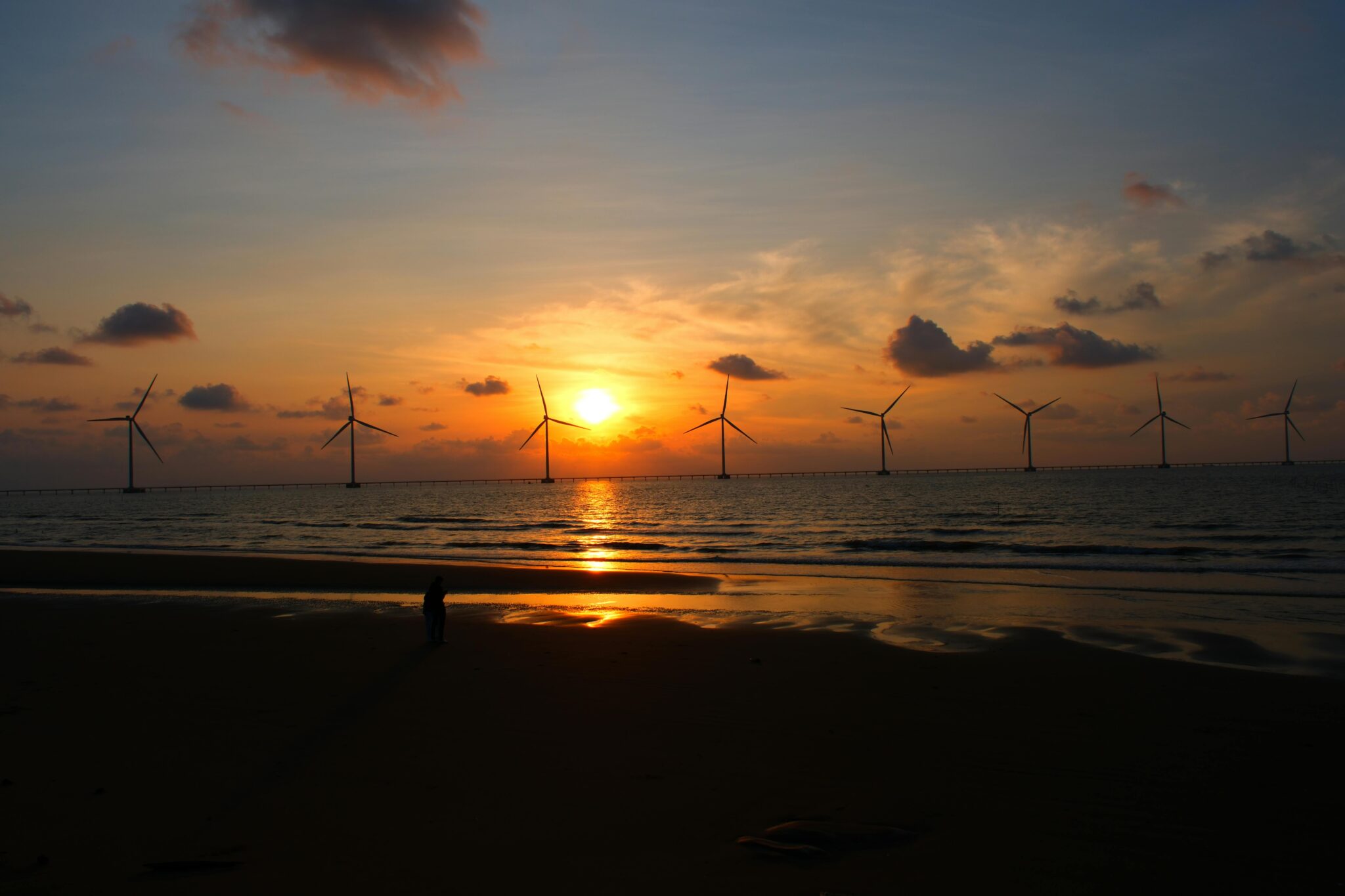
Hybrid Offshore Energy: Merging Oil, Gas & Renewables
Offshore operators once treated oil, gas, and renewables as separate realms; today they see a single opportunity. By integrating floating wind, intelligent microgrids, and circular-economy practices into existing platforms, companies cut emissions, defer decommissioning, and unlock fresh revenue. This overview distills the latest breakthroughs, real-world results, and lifecycle tactics that empower stakeholders to build resilient, profitable energy hubs—backed by Trident Deep Water Consultants’ decades of offshore installation consulting expertise.
The Fusion of Traditional and Renewable Energy Strategies
Norway’s Gullfaks field, paired with the Hywind Tampen floating wind farm, demonstrates what fusion can deliver: 16 percent reductions in both operating cost and CO₂ through coordinated load-sharing and smart microgrids (https://www.sciencedirect.com/science/article/pii/S0959652623029001). Similar repurposing efforts in the North Sea convert idle jackets into turbine foundations, lowering removal spend and shortening construction timelines (https://www.offshore-energy.biz/repurposing-oil-gas-infrastructure-to-harness-offshore-wind-power/).
Key value drivers
- Optimized energy mix: Turbines handle auxiliary loads, slashing diesel burn.
- Deferred abandonment: Platforms gain second life as renewable hubs.
- Risk hedging: Multiple income streams cushion commodity swings.
Technology enablers
AI-driven controllers balance spinning reserve with fluctuating wind, while composite risers accommodate extra power cables without overloading topsides. Trident Deep Water Consultants blends analytics with practical field experience to deliver these hybrid schemes on schedule and under budget.
Technical Innovations Accelerating Sustainability
- Autonomous trenchers for sub-sea infrastructure: Vision-guided vehicles map seabeds to centimeter precision, placing export cables while trimming dredging hours 25 percent.
- XXL monopiles and suction buckets: Single-lift installs reduce vessel days, fuel use, and weather risk.
- AI microgrid optimization: Algorithms from the University of Stavanger predict load, wave, and wind patterns with impressive accuracy, optimizing renewable energy uptake.
Implementation hurdles—corrosion, biofouling, limited weather windows—are countered through high-entropy alloys, graphene coatings, and data-driven scheduling. Digital twins let teams fine-tune layouts before mobilizing, often eliminating three to five offshore cable joints.
Environmental Compliance and Circular Economy Gains
Regulators from BOEM to the European Commission require granular impact data; non-compliance delays can cost millions. Proven mitigation tactics include:
- Real-time turbidity monitoring to protect fisheries during piling.
- Low-toxicity hydraulic fluids that prevent surface sheen incidents.
- Closed-loop steel programs turning retired pipe into certified feedstock, trimming Scope 3 emissions (https://pgjonline.com/magazine/2024/july-2024-vol-251-no-7/features/circular-economy-initiatives-for-offshore-piping-and-related-infrastructure).
Trident’s ISO 14001 workflows integrate these elements upfront. Our teams align acoustic studies with marine-mammal migration, engage coastal communities early, and run transparent ESG dashboards—all of which shorten approval cycles and strengthen reputations.
Project Lifecycle Management in Complex Marine Environments
Effective stewardship spans six decisive gates:
- Phase 1: Strategic Planning: Site screening, power-offtake models guide investment committees.
- Phase 2: Concept Select: FEED and technology matrices slash later change orders.
- Phase 3: Detailed Design: Class approvals, HAZID/HAZOP sessions lock schedule certainty.
- Phase 4: Execution: Integrated logistics and rigorous QA/QC ensure zero-LTI commissioning.
- Phase 5: Operations Support: Performance analytics boost uptime and optimize maintenance.
- Phase 6: Decommissioning or Repurpose: Circular asset plans capture end-of-life value.
Trident operates from Brazil’s ultra-deep pre-salt to the UK Exclusive Economic Zone, where 7.4 percent of waters are rated prime for turbine deployment (https://www.frontiersin.org/journals/fuels/articles/10.3389/ffuel.2025.1464944/full). Local content rules, supply-chain volatility, and harsh weather are anticipated through proactive risk registers and adaptive contracting frameworks.
Trident Deep Water Consultants: What Sets Us Apart
- Distinct capability: Dual-sector mastery combines drilling veterans with wind engineers, creating designs that anticipate hybrid loads.
- Precision craftsmanship: Custom lift-frame tooling fabricated in-house cuts hook-up times 30 percent.
- Authentic stewardship: Transparent ESG reporting builds regulator and investor trust.
Key Takeaways
- Integrated energy hubs boost profitability and slash carbon footprints.
- Autonomous trenchers, suction buckets, and AI microgrids improve safety, speed, and efficiency.
- Early engagement with lifecycle experts ensures environmental compliance and circular-economy wins.
- Trident Deep Water Consultants provides end-to-end guidance that turns complex challenges into competitive advantage.
Conclusion
The offshore sector’s future is multidisciplinary. Platforms that once flared gas can now export wind power; pipelines scheduled for removal can feed green hydrogen; and data scientists share dashboards with subsea technicians. By partnering with Trident Deep Water Consultants, stakeholders gain a single, accountable ally skilled in the technical, regulatory, and commercial nuances of this transition. Discover more on our consulting services.